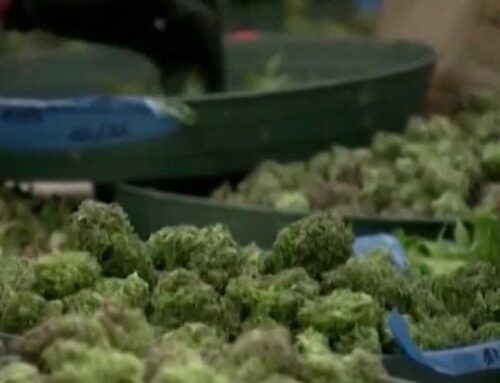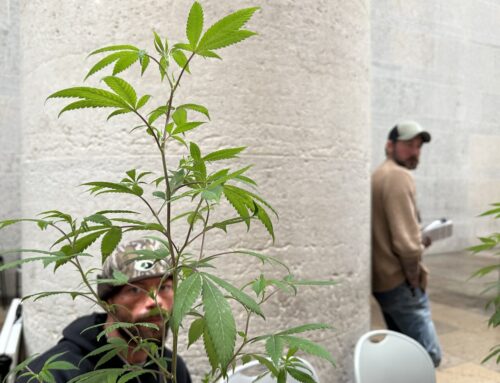D.C. Environmental Advocates Push Black Youth to Live Green
November 19, 2025
From threats to eco-friendly policies and protections to reneges on climate action, the Trump administration has taken a clear stance on the environment that won’t stand for the District’s green advocates.
Howard University’s Gwendolyn S. and Colbert I. King Endowed Chair of Public Policy program, chaired by Marie Johns, presented a two-hour panel on Nov. 13 titled “From Awareness to Action: Building Resilient Communities Through Environmental Justice,” set to reimagine the future of ecological progress.
Panelists included Kari Fulton; Akiima Price, founder of Friends of Anacostia Park; and the Rev. Dr. Benjamin Chavis, lauded as the “father of environmental justice,” while Dr. Rubin Patterson, dean of Howard University College of Arts and Sciences, led the immersive discussion that prompted the task: how to “build better forward.”
“Environmental justice has a long legacy, [and] it’s…not just an academic study— it’s something that is about community and restorative justice and hope,” Fulton told The Informer. “There’s possibility growing. I want people to think about how they can find themselves [considering] being better advocates, stronger advocates, more connected to this work.”

Joined by Charles Lee, a pioneer of the environmental justice movement, and Howard University student-advocate Hailey Morris, Thursday night was nothing short of an American demand for better lives and health – an exacerbated call in the hands of President Donald Trump.
As WHUT, home of Howard University’s television station, played host in Northwest D.C., the United Nations annual climate summit – known as COP30 – was taking place in Brazil, with high-level United States delegates noticeably absent for the first time in history.
During the Nov. 13 conversation, other key topics included: natural disaster fallout, artificial intelligence, and the dangers of water and air pollution in marginalized communities.
As for the nation’s capital, some panelists cited the alarming culture of displacement and “survival mode” as particularly harmful to local communities, notably in the predominantly Black Wards 7 and 8.
“The spectrum of justice and of the word environment is not…just these trees and grass. It’s the living and non-living things that make up your immediate surroundings,” Price said during the panel. “Our people have the passion and commitment [for environmental activism], [but] we are so beaten down mentally — the crime and all these things that we continuously see… To really attack and sustain the level of effort that’s needed to address [environmental injustices], I think people have to get out of survival mode.”
For many eco-activists, including those at WHUT-TV, addressing environmental racism began with the 1987 “Toxic Wastes and Race in The United States” report, which Chavis, as then-executive director of the United Church of Christ (UCC) Commission for Racial Justice, led the UCC in publishing.
Based on a 1982-sit-in in Warren County, North Carolina, the faith leader and activist officially coined the term “environmental racism” after joining protesters against the state’s polychlorinated biphenyl (PCB) landfill in their community — highly considered as the catalyst of the environmental justice movement.
“We can reflect on what happened back…when “Toxic Wastes and Race” was first published, or…when we had the first National People of Color Environmental Justice Leadership Summit [in 1991], and fast forward to now,” Chavis said.
Some 40 years later, Chavis, president of the National Newspaper Publishers Association (NNPA), considers the state of injustice just as urgent and timely. To cite a few incidents that have since tanked the ecosystem: the ongoing water crisis in Flint, Michigan, “cancer alley” in Louisiana, historic mistreatment of Southeast D.C.’s Anacostia Park, as well as the fact that 6% of all children in Harlem, New York, live with asthma.
“These environmental sciences matter, because they’re fundamental to what the future of life will be,” Chavis pleaded, “not only for the next generation, but for many generations to come.”

To that point, Price is taking the reins on a new form of environmental stewardship: healing inner communities, in order to heal the Earth.
The Friends of Anacostia Park founder delivered an oral history of the landmark River, emphasizing the origins of a site once flourishing in crops and trade that fell victim to sedimentation and industrialization, due to interference from colonizer John Smith and the European settlement.
Coupled with the bordering Barry Farm, one of the first places African Americans could purchase property post-Civil War, Price noted it a perfect storm of misconception and racial bias that has since left Black Washingtonians to pick up the pieces.
“There’s so much resilience in our people, in nature that we get caught up in this narrative of [Southeast being] dirty and bad from just having that experience,” Price said. “When you intentionally program [the environment] with people that need to spend time together, or intentionally empower family reunions in the park with opportunities to have conversations…[it’s] centered around care, and being trauma-informed is what Restorative Park Engagement is.”
From offering returning citizens work on the grounds, to “practicing love” by giving Southeast’s elders a place to explore “and feel needed,” Friends of Anacostia Park prioritizes the value of human capital in tandem with healing through nature.
Beyond saving the planet, the founder says the practice can help constituents “tap into their inner-power” while shaping mental health among low-income African Americans.
“Focusing on thinking about why people are shooting each other, why are all these things going on,” Price said as an example. “It’s so important to get them out of survival mode. If our mind’s not right, we’re not going to be able to subscribe [to] or join any of these larger movements that are going to ensure our safety down the line.”
Fulton, a longtime admirer of Price’s work, deems local organizing and awareness as key to reversing the trickled-down effects of environmental racism, which isn’t necessarily defined by toxic exposure but also “not having a say in that decision-making.”
The Howard University adjunct professor referenced Chavis’ groundbreaking research in North Carolina as well as the current uproar taking place in Prince George’s County, where Marylanders have been actively protesting a proposed Landover data center that risks raised energy costs, detriments to water systems, increased air pollution, among other dire effects.
“And if you’re targeting Black counties,” she continued, “that means that you’re targeting the Black economy and the Black dollar.”
While applauding the continued efforts of Prince Georgians, Fulton also emphasized a need for direct representation in policy-making, fund allocations and statewide autonomy, topped with a way to ensure constituents can recognize what injustice looks like “in their own backyard.”
“Those types of opportunities are key,” Fulton told The Informer, “where we are able to think about the environment, not just from a personal or an abstract perspective, but from ‘every day I walk in this neighborhood. I live in this neighborhood. This is my Earth, this is my block.’”
As former president of Howard University Water Environment Association, featured guest Morris told The Informer college students of all disciplines are engaged in the environment, but it just takes a little push to meet them halfway.
For the 21-year-old graduating senior, that push manifests through encouraging Bison to invest in sustainable shopping initiatives, such as thrifting.
“[I ask them]: ‘Do you want to be wearing these clothes with all these toxic chemicals on your textiles? Do you want to use something that was made back when [clothes quality] was a little bit better [and sometimes more organic]?’” Morris explained. “This is the way to pull them in. And then I was able to talk more about other environmental impacts and community impacts that really pulled them in even more.”
With the 2023 launch of Howard’s Department of Earth, Environment and Equity (E3), Fulton works with E3 chair Dr. Janelle Burke to expand the pipeline of environmental stewardship, including co-teaching courses for Title I high school students across the country. The courses offer young scholars college credit and a chance to reimagine a healthier planet for themselves.
“[We’re] getting students, outside of the classroom aspect, thinking about their own communities and how to use the resources that are available,” Fulton said. “You have a lot of technology that can be utilized…in how the day to day of our community works. People will be surprised how much they can make a difference just by getting involved.”
While Morris encourages all Black environmental stewards to focus on “diversifying these spaces for better advocacy,” Fulton touts the importance of daily tools such as checktheweather.net and communal collaboration, shouting out her own pending database that will connect affected groups nationwide.
Finally, Chavis tasked the room of young Black champions to think about how they can “build forward better,” starting with an increase in writing and research, effective distribution, and self-advocacy.
“We should not allow people to have a paternalistic attitude toward our community, as if they know what’s better for us when we know what’s better for ourselves,” the longtime activist and NNPA president explained. “There’s no better expression than self expression— so how do we transmit our self expression about these issues?”
Search
RECENT PRESS RELEASES
Related Post



